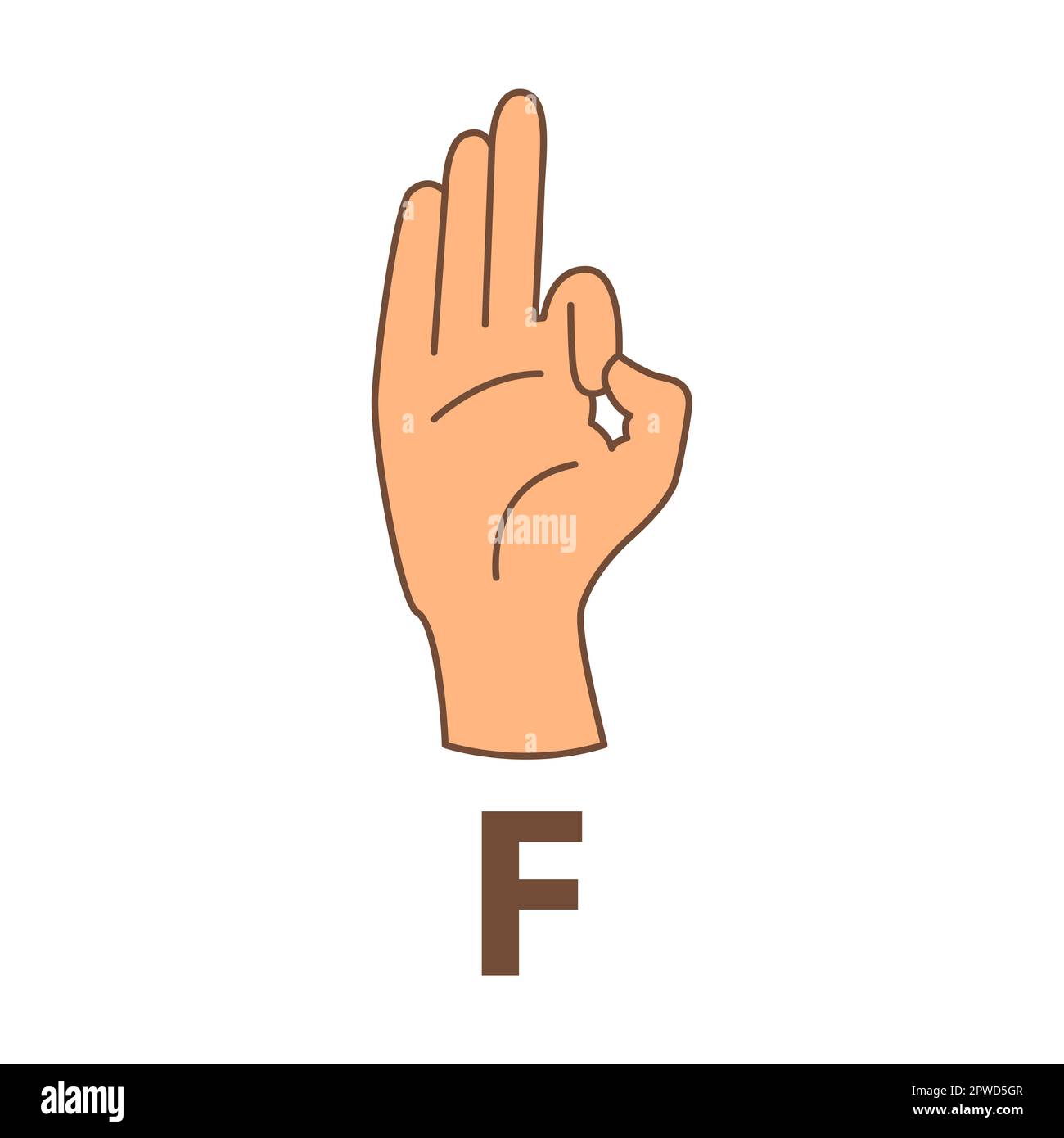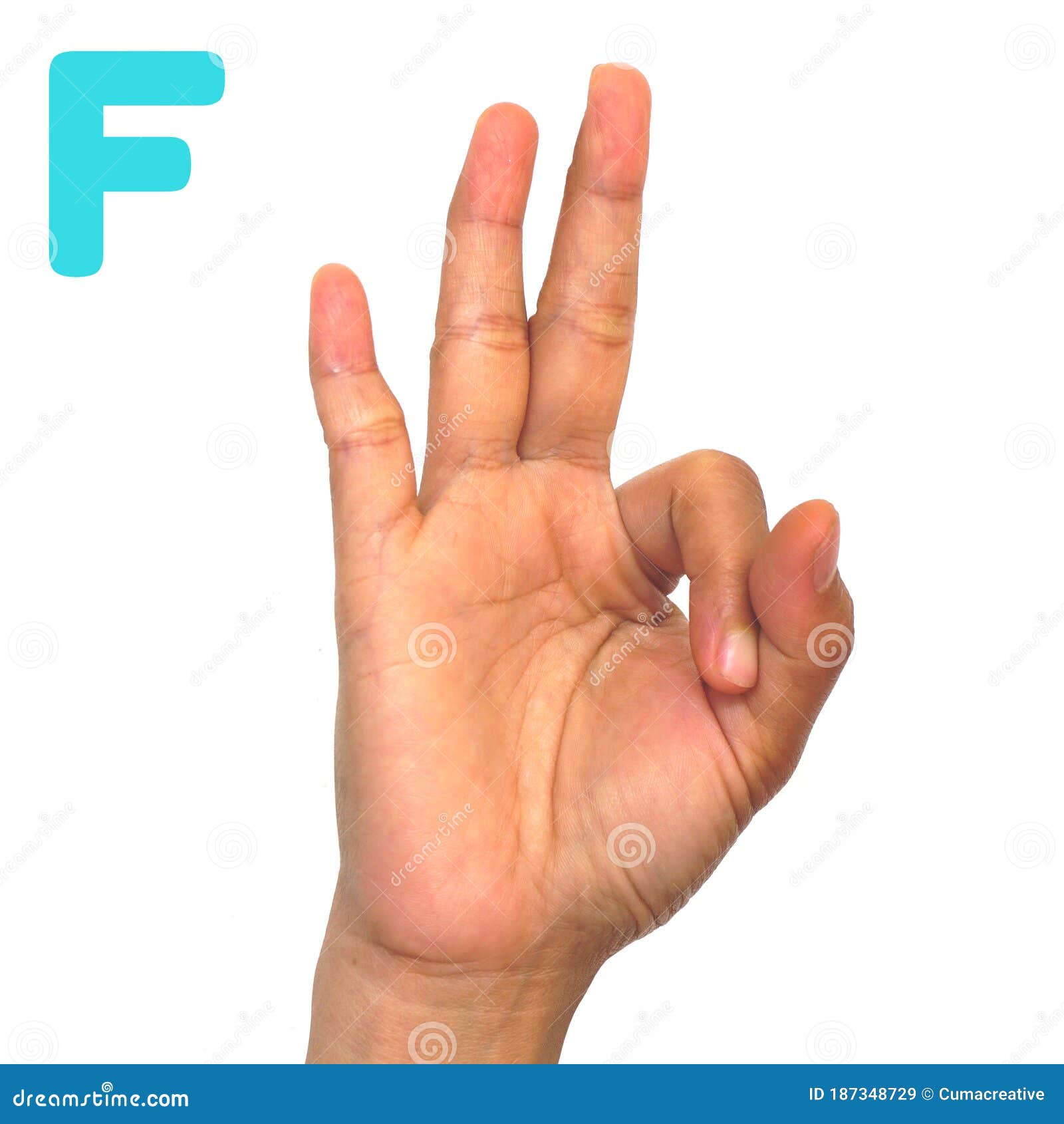Signing F in American Sign Language - A Guide
Learning how to communicate with your hands can open up a whole new way of connecting with people. American Sign Language, often called ASL, offers a rich and expressive means of sharing thoughts and feelings. Getting started with ASL often means learning the alphabet, and one particular letter, the 'f', shows up quite a lot in everyday signing. It is, you know, a pretty common letter in many words we use all the time, so its sign comes in handy for fingerspelling and for forming other signs too.
This particular hand shape for 'f' serves as a building block for many different signs. It helps people spell out names or words that might not have their own special sign. Knowing how to make this sign properly means you can begin to spell out many things, making your ability to communicate in ASL much stronger. It also means you can pick up on many other signs that use this very hand shape as their starting point, which is rather helpful.
So, we are going to look closely at what the 'f' sign means in ASL, how you make it with your hand, and why it is so important for those who wish to learn this beautiful visual way of speaking. We will, in a way, break down its parts and talk about how it fits into the larger picture of ASL communication. You will find that it is, quite literally, a simple yet powerful gesture.
Table of Contents
- What is the 'f' in sign language?
- How does the 'f' in sign language help communication?
- How to Form the 'f' Sign
- Remembering the 'f' in sign language: Visual Cues
- Why is the 'f' in sign language used often?
- Are there variations for the 'f' in sign language?
- The 'f' Handshape in Other Signs
- Learning the 'f' in sign language: Practical Steps
What is the 'f' in sign language?
The letter 'f' in American Sign Language is a particular hand shape that stands for the letter 'f' from the alphabet we use for writing. It is, basically, one of the twenty-six signs you learn when you begin to spell things out using your hands. This sign holds a really important spot because it is part of the basic set of tools for anyone wanting to speak through signs. It acts, you know, as a fundamental piece of the communication puzzle for people who are deaf or hard of hearing, and for those who wish to speak with them. The way you make this sign is quite specific, and getting it right helps make sure your message is clear to others. It is, in some respects, a foundational movement that many learners practice early on.
How does the 'f' in sign language help communication?
The sign for 'f' plays a very big part in communication because it is a key piece of fingerspelling. Fingerspelling is what you do when you spell out words, letter by letter, using hand shapes for each letter. When a word does not have its own specific sign, or when you need to make sure a name is spelled just right, you will, in a way, use fingerspelling. So, if you are trying to tell someone a name like "Frank" or a word like "fruit," you will need to know how to form the 'f' sign. This makes it possible to share information that might not have a direct sign, helping people understand each other much better. It is, you know, a very practical tool for getting your message across, especially for new words or names. People sometimes use it when they are not sure of a specific sign for something, or if they are just starting to learn.
How to Form the 'f' Sign
Making the 'f' sign in American Sign Language involves a few simple steps with your hand. You will use your dominant hand, the one you write with, for this. To begin, hold your hand up so your palm faces away from you, towards the person you are speaking with. Next, bring your index finger and your thumb together so they touch, making a small circle or an 'o' shape with those two fingers. It is, you know, a bit like you are holding a small coin between them. The rest of your fingers, meaning your middle, ring, and pinky fingers, should stay stretched out straight, pointing upwards. They should be, more or less, relaxed but still extended. This specific position of your fingers and thumb creates the sign for 'f'. It is a distinct hand shape that people who know ASL will easily recognize. Practice this movement a few times to get a feel for it, making sure your palm stays facing outwards. It is, in fact, one of the easier signs to pick up when you are just starting.
Remembering the 'f' in sign language: Visual Cues
A good way to help yourself remember the sign for 'f' in sign language is to think of a simple picture. You can, for instance, imagine a flag waving gently in the wind. The way your three fingers stretch out straight, like the fabric of a flag, and the way your thumb and index finger make a small circle, could be like the flagpole or the part where the flag is attached. This mental picture can, you know, really stick in your mind and make it easier to recall the hand shape when you need it. Visual helpers like this are often very useful when you are learning something new, especially with signs. They give your brain a little hook to hang the information on, so you can pull it out quickly when you need to use the sign. So, next time you are trying to remember the 'f' sign, just picture a flag blowing in the breeze. It is, pretty much, a common trick that helps many people get the hang of it.
Why is the 'f' in sign language used often?
The 'f' sign is used quite a lot in sign language for a few good reasons. For one thing, the letter 'f' itself appears in many words and, as a result, in many common acronyms we use every day. Think about words like "family," "friend," or "free." When you need to spell out these words, or parts of them, the 'f' sign comes into play. It is, therefore, a sign that you will find yourself making quite frequently if you are engaging in fingerspelling. Also, many other signs in ASL use the 'f' hand shape as their starting point, or as a base. This means that once you learn the 'f' sign, you have already mastered a piece of many other signs. This makes learning new signs a bit easier, as you are already familiar with the hand position. It is, you know, a very practical sign to have in your communication toolkit, appearing in conversations more often than some other letters.
Are there variations for the 'f' in sign language?
While the basic form of the 'f' in sign language stays pretty consistent, there can be slight variations depending on who is signing or the specific context. For example, some people might hold their fingers a little more tightly together, or their palm might be angled just a tiny bit differently. These small differences usually do not change the meaning of the sign, as long as the core shape with the touching thumb and index finger and extended other fingers is clear. Sometimes, you might see these minor differences if you look at how different people sign, or if you use various learning apps or videos. An ASL dictionary app, for instance, might show the main way to sign 'f' but also mention if there are any common slight changes. The important thing is to keep the main shape clear so that anyone watching can easily recognize it. It is, you know, generally accepted that slight personal styles exist, but the core hand shape remains the same.
The 'f' Handshape in Other Signs
The hand shape for 'f' is not just for spelling out the letter itself; it is also a very important part of many other signs in American Sign Language. This is a common thing in ASL, where a single hand shape can be the base for multiple different words, with only a small change in movement or placement making a different meaning. For example, the source text mentions signs like "family," "free," and "Friday" as using the 'f' hand shape. For the sign for "family," you start with the 'f' hand shape and then bring your hands together in a circular motion, showing a group coming together. For "free," you might start with the 'f' hand shape and then move your hands apart, showing release. The sign for "Friday" also starts with this 'f' shape, and then you move it in a specific way to show the day of the week. It is, basically, like having a base tool that you can adapt for many different jobs. This makes learning ASL a bit more logical, as you can see how different signs are connected through their starting hand shapes. You will find that many signs build upon these foundational shapes, making the learning process, you know, a little more intuitive.
Learning the 'f' in sign language: Practical Steps
To really get good at signing the 'f' in sign language, and indeed any sign, practice is key. First, watch how the sign is made very carefully. Many online videos and apps show exactly how to position your hand and fingers. Then, try to copy the movement yourself, using your dominant hand. Do it slowly at first, making sure your index finger and thumb touch, and your other three fingers extend upwards. Pay attention to your palm facing outwards. You can, you know, even use a mirror to watch yourself and make sure your hand shape looks right. Repeat the sign many times, until it feels natural. The source text mentions that some instructors teach the 'f' sign along with other signs that use the same hand shape, like "9" or "Friday" or "family." This approach can be very helpful because it shows you how one basic hand shape can be used in many different ways. So, keep practicing, and soon, signing 'f' will become second nature to you. It is, in fact, a very rewarding experience to feel your hands start to communicate.


